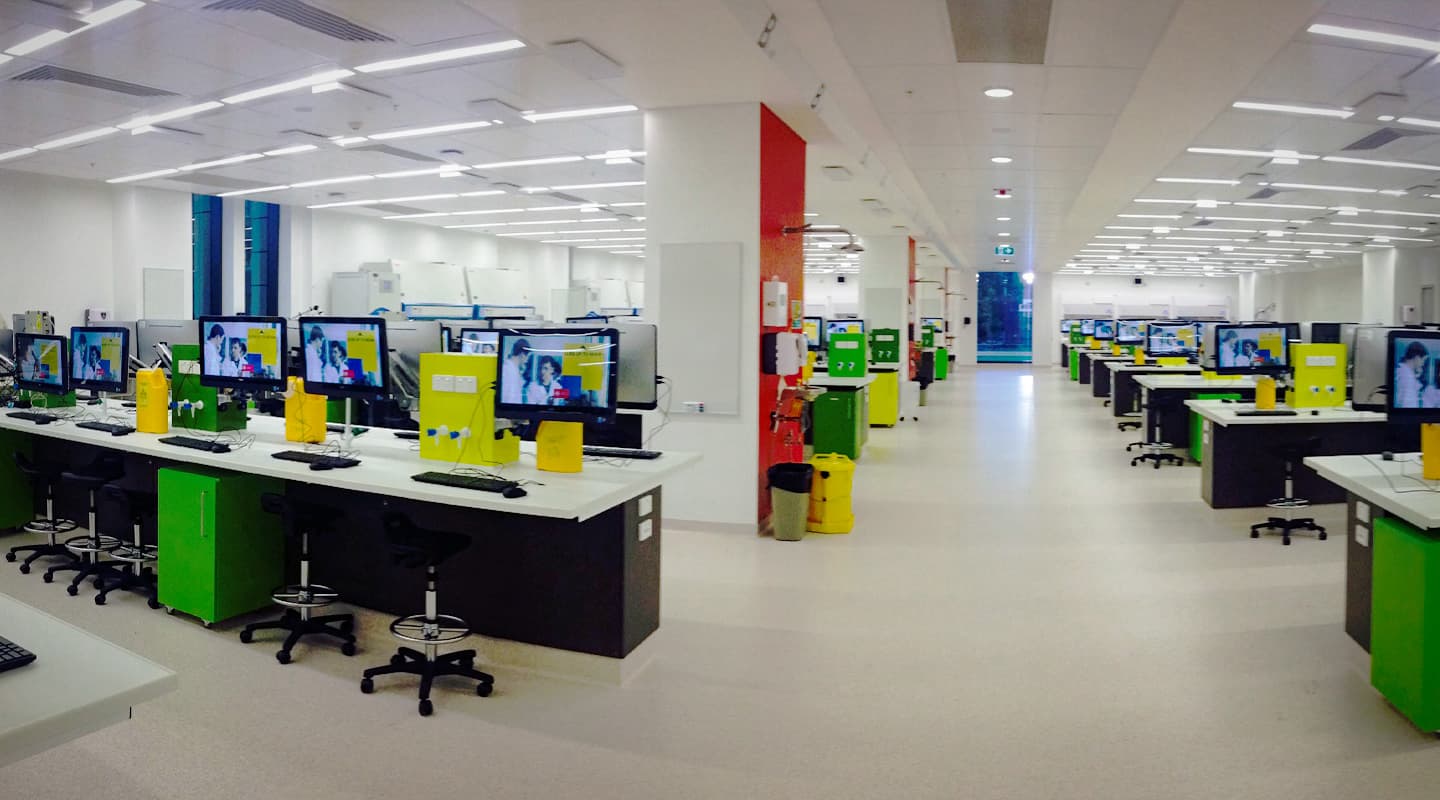
Lab Report
Why the University of Sydney’s AVIA award-winning X-Lab stands out from the crowd.

Text:/ Derek Powell
Universities thrive on innovation. Their very reason for being is to create new knowledge, so the sector is constantly coming up with new styles of teaching and learning, and trialing new technologies to make teaching spaces more effective and efficient. Sometimes new ideas appear and disappear very quickly, but when new modes of teaching work really well, they will spread like wildfire. Often technology, particularly audiovisual technology, is a key enabler. In just the last decade we’ve seen the proliferation of collaborative learning spaces; lecture capture systems and massive open online courses (MOOCs) to name just three tech-heavy tertiary education trends. To that list we can now add the concept of the Super Lab.
Put simply, a super lab is a flexible wet-lab that allows multiple practical science classes to be taught simultaneously in the same space. The super lab leapt to prominence in 2007 when the London Metropolitan University opened a facility to cater for up to 280 students and 12 simultaneous classes. Since then, dozens of super labs have been built or planned in the UK, Europe and Australia. However the X-Lab at the University of Sydney has definitely re-set the expectations of what can be achieved in a practical teaching lab by applying cutting-edge audiovisual and IT technology.
The new lab is part of the teaching space in the new Charles Perkins Centre at the University of Sydney. It is designed as a ‘cross-disciplinary’ space that can teach practical laboratory techniques to students studying various specialties in the fields of science and health. At the very heart of the teaching concept is the ability to run simultaneous classes within the one open-plan laboratory.
The lab was designed to cater for up to eight(!) classes at once, with each group ranging in size from eight up to 240 students in any combination. Following current best practice, each student was to be equipped with a PC, since modern scientific instruments and microscopes are able to hook up via USB to save experimental data and images onto a computer in real time. Individual PC screens would also allow each student to receive a close-up view as their tutor demonstrated the experimental techniques.
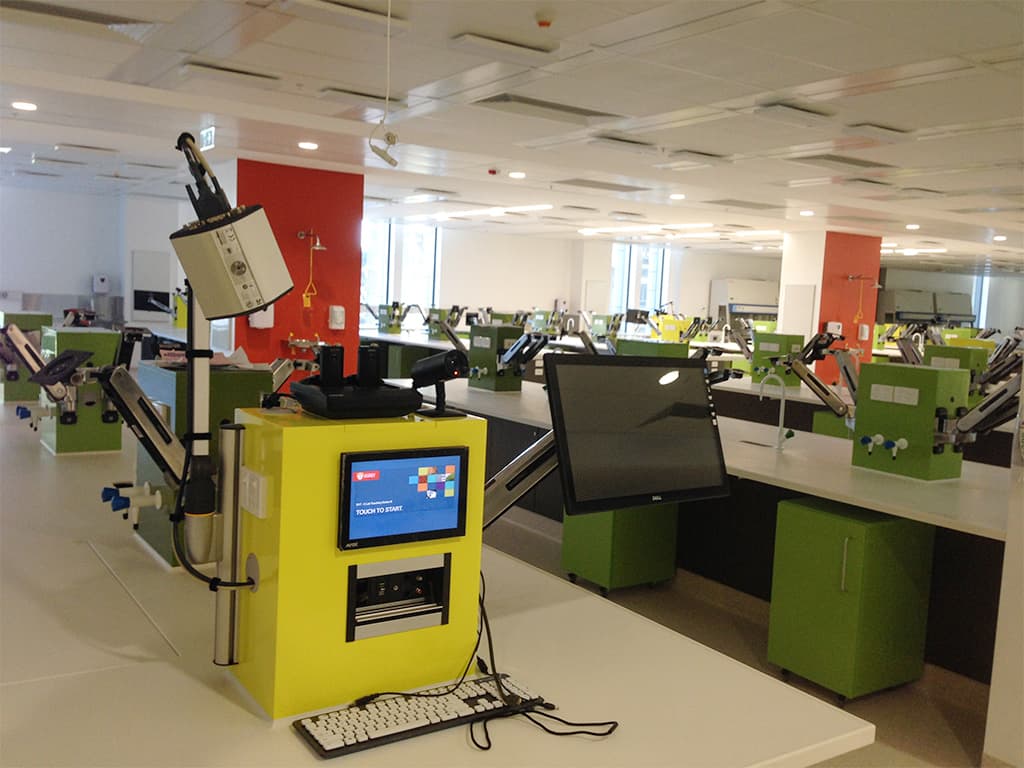
THE MATRIX UNPLUGGED
A traditional solution might have involved a massive matrix switcher but as the University’s AV team developed the design brief, they realized that a single switched output per student would seriously limit the educational opportunities. A matrix solution would have offered students either a single video source from the instructor or view or their own work – not both at the same time. However the experimental techniques being demonstrated really required the ability to display up to three video output streams from the tutor’s station, for example, a camera output showing the tutor, a microscope view and data from a PC screen.
Creating a system with up to 750 selectable outputs was a massive challenge, so for the answer, the University AV team drew on experience gained at their own innovative PNR building Learning Studio [see AV issue 27]. The Learning Studio pioneered the use of IP streams to route and transport video, so the team adapted that approach to develop a converged AV/IT streaming solution that delivered much more flexibility, allowing students to display multiple video windows side-by-side on their screen.
With the technical goals set, audiovisual consultants WSP undertook three reference designs with one of the three chosen following detailed user demonstration and sign-off process. This process required out-of-the-box thinking and a truly collaborative effort with the University during design, and later with integrators Fredon Technology during construction.
The chosen solution was to convert three feeds from each teaching position into 720p high definition H264 streams with Haivision Makito encoders. Using a specially programmed interface, each student logs-in to their respective tutor’s streams on their own PC and arranges the video windows to suit their needs. Each stream appears as a separate Haivision Instream player window which can be resized, moved or displayed alongside the student’s own work on their PC. It is a stunningly-elegant solution, made even easier to use by the choice of a Dell all-in-one touch screen PC running Windows 8 as the student PC. Each PC is mounted on an Ergotron arm which enables it to be brought close for detailed viewing or moved well clear to allow full use of the bench space.
A very practical challenge was to make it easy for students to find their own class in the cavernous X-Lab space. Each class group is assigned a colour code, which is displayed in map form on digital signage at each entrance. Students log-in to say, the Red group on their PC and in a neat touch, can easily identify their tutor who will be wearing a red lab coat.
Each of the eight teaching positions, although quite compact, is comprehensively equipped with a great deal of thought given to ergonomics. As well as their own PC, tutors have access a laptop plug-in and three different HD cameras: a Panasonic ‘face cam’ so students can watch the tutor at work; a Wolfvision document camera on a clever articulated arm to provide a close-up view of the experimental techniques; and a Toshiba microscope camera. Any three sources may be selected via the AMX touch panel to stream to the students in their group. “There was an extensive conceptual mockup of the teachers station to ensure that we got the ergonomics right,” commented Nick Orsatti from Fredon Technology, “One key piece was the use of AMX Hydraport cable management systems with their retractor action, which provided a great solution for the lab environment”.
WHAT IS A SUPER LAB?
Teaching Laboratories are expensive to build, staff and operate. Often each University discipline, such as Chemistry, Biology, Physics, Medicine and more will have their own dedicated labs even though they may be in use for teaching only a few times a week. The super lab concept typically allows more intensive and efficient use of space with both large first-year classes and smaller specialized courses able to share the same physical space. The potential savings are huge, with one new super lab replacing several stand-alone labs and consolidating staffing requirements. Following the initial success of the world’s first at London Metropolitan University, super labs are now in place at many universities including Nottingham Trent University and Liverpool University in the UK; Carleton University in Canada; and the University of Technology Sydney and are planned or under construction at many more.
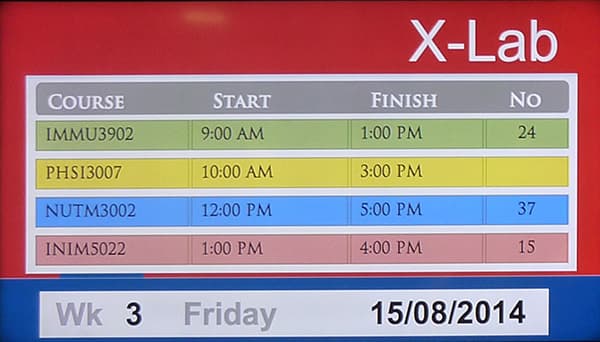
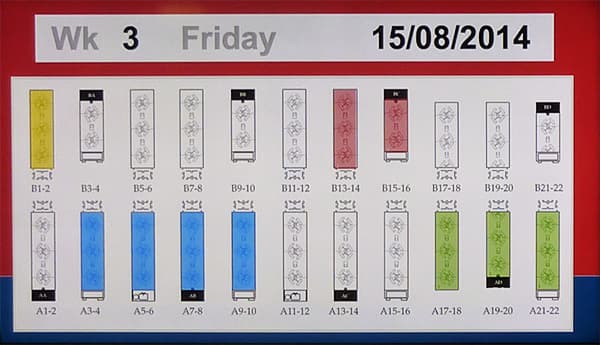
Each class group is assigned a colour code, which is displayed in map form on digital signage at each entrance. Students log-in to say, the Red group on their PC and in a neat touch, can easily identify their tutor who will be wearing a red lab coat.
CONE OF SILENCE
With the vision side of things sorted, attention turned to the considerable challenges of audio in a multi-user space. The x-lab is open plan so students at adjacent benches may be listening to different tutors. To avoid a cacophony of sound from multiple instructors in the same space, London (and many other super labs) chose to provide each student with a wireless headset tuned to their own group transmission. This kind of ‘tour-group’ technology is relatively simple to implement but there are significant practical problems with managing and sanitizing hundreds of headphones in a laboratory setting. Late in the project audio headsets were vetoed by the new consultative committee, so the AV team scoured the world for a speaker system directional enough to meet the challenge.
After many tests and reports the AV team selected a Finnish ultra-directional speaker system primarily used for close range sound in Museum exhibits and retail spaces. The electrostatic speakers, made by Panphonics (and appropriately named Sound Shower), deliver an ultra-narrow directional pattern that provides good articulation immediately beneath the enclosure but an extremely sharp cut-off as a listener moves away.
TAKING A SOUND SHOWER
I was given a demonstration by Paul Menon, University of Sydney’s technical manager Audio Visual Services, and was absolutely staggered by the effectiveness of the system. Standing at one bench, I could clearly hear the instructor speaking yet when I moved just a couple of steps and stood under a Sound Shower enclosure at the adjacent bench, I found myself listening to another instructor, with very little crosstalk. Being an electrostatic design does limit the low frequencies somewhat; however I found speech reproduction to be clear, crisp and easily distinguished.
The tutors use wireless headsets from the Shure Microflex digital range that provide a return audio (sidetone) so they can hear themselves clearly. The receivers transport audio via Dante networking, providing a simple mechanism to route any tutor to any required combination of benches to cater for different size classes. The wider audio system utilizes Dante to distribute audio between the nine Symmetrix Radius Series DSPs, 16 channels of microphones and 45 loudspeaker zones.
Tying the whole system together is an AMX control system with a clever graphical user interface that allows instructors to select which parts of the room to address. Programming for the system was undertaken by the ubiquitous Keith Austin from AT Controls, who expended plenty of blood, sweat and tears on devising a foolproof touch panel layout. Teachers simply click the benches they want to send to on the touch panel’s graphical plan of the laboratory, click the sources they want to transmit, such as microscope camera, visualizer or PC and the control system ensures that the audio and video gets to where it needs to be.
The overall installation is beautifully executed and considering its capability, quite unobtrusive. Apart from the teaching stations and the PC’s there is very little visible that hints at the unparalleled flexibility offered by the system. Perhaps the icing on the cake is the way in which the University AV staff, consultants and integrators all contributed to the outcome. As Fredon’s Nick Orsatti writes: “This project was once again a demonstration of a successful client-consultant-integrator ecosystem that is becoming even more critical for project success.” The AVIA award for Best Application of AV in an Education Project is a fitting accolade for a project that is already being widely admired – and imitated!
“”
Creating a system with up to 750 selectable outputs was a massive challenge
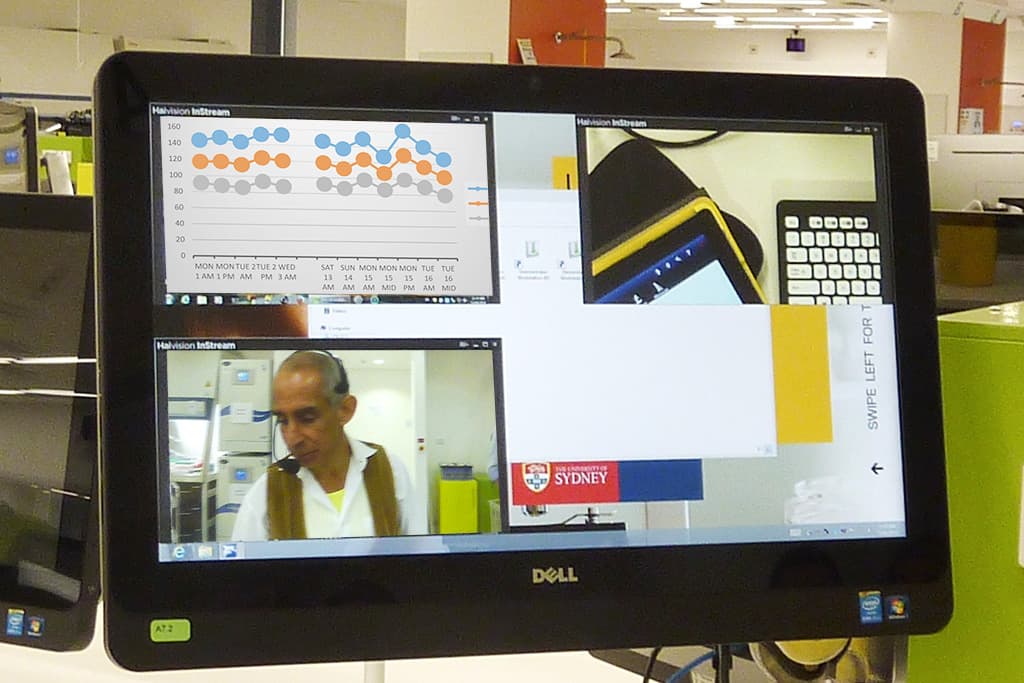
KEY TECHNOLOGIES
Streaming Video:
Haivision Makito encoders and Instream software players
www.haivision.com
Video Switching:
Extron
www.extron.com
Cameras:
Wolfvision: www.wolfvision.com
Toshiba (microscope): www.toshibacameras.com
Panasonic: www.panasonic.com/business/provideo/
Control Systems:
AMX
www.amxaustralia.com.au/aunz/
All in One PC:
Dell i7
Monitor Arms:
Ergotron
www.ergotron.com
Camera Support:
Yellowtec m!ka
www.yellowtec.com
Speakers & Amps:
Panphonics
www.panphonics.com
Microphones:
Shure Microflex MXW1 hybrid bodypack with headset
www.shure.com
Audio Distribution:
Symmetrix Radius – networked using Dante protocol
www.symetrix.co

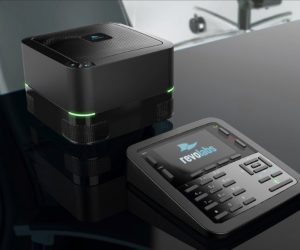
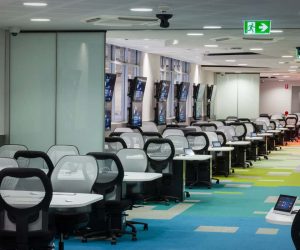
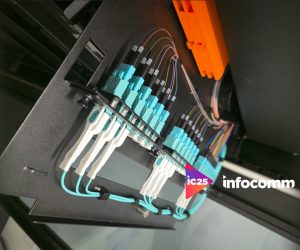
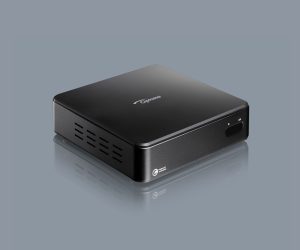
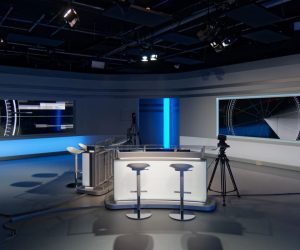

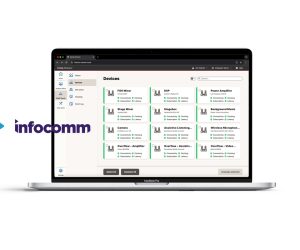
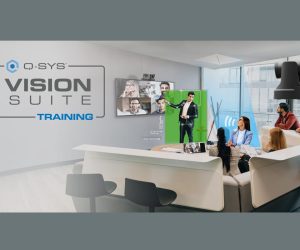
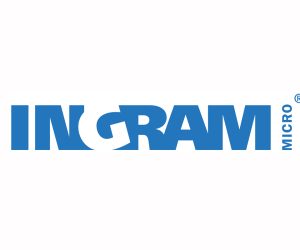
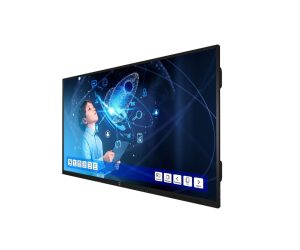
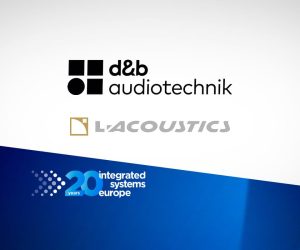


RESPONSES